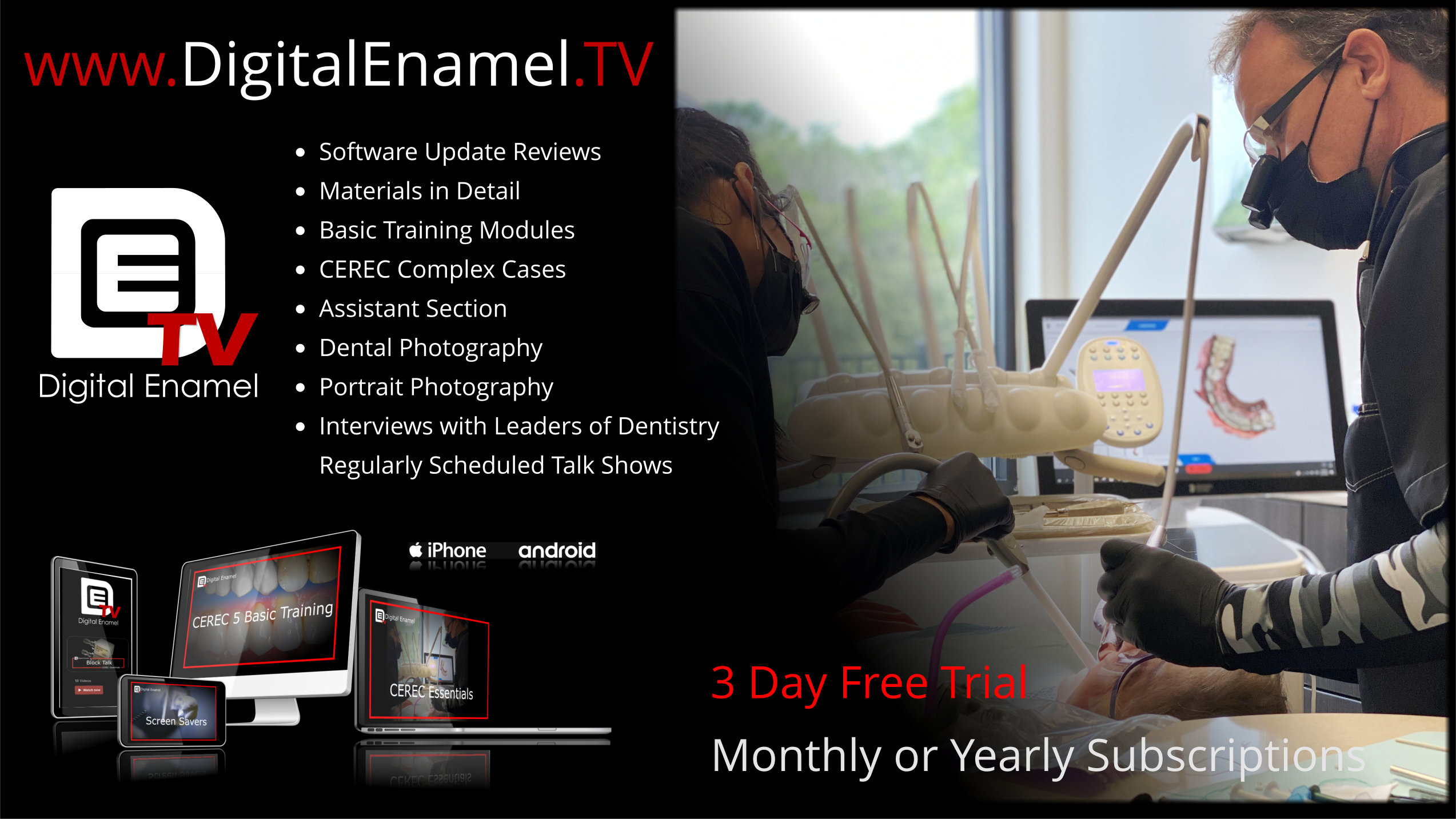There are things one never forgets from dental school. Two of the things that resonate the most with me are as follows: “You never regret the patient you don’t treat” and “The hardest thing in dentistry is crowning a single central incisor.” The first comment I really take to heart typically after exhausting all effort on doing a great job. The second, I tend to use as a test on where we are in technology, material science and my personal ability to adapt. However, we should never forget all the dental materials we have in our “bag of tricks” and pick the best one for the job.
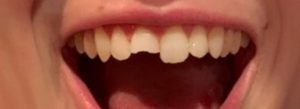
A young lady called our office stating she had broken #8 in half over the weekend. We brought her in for a consult to test the tooth and make sure the tooth was restorable. She had no pain and slight sensitivity. We explained that the break was close to the nerve but no exposure was noted and the tooth could possibly need endo in the future due to the trauma. Tooth #8 naturally was sitting facial to #9 and I think this is the reason she did not break both of them. After discussing the need for a crown she asked if she should crown both of them. With digital technology and the ability to manufacture chairside we decided to leave the perfect #9 alone knowing that we could always do something different if needed. We scheduled her for a crown on #8 the next visit allowing enough time to match the adjacent tooth.
She presented to the office for #8 and we decided to use copy and mirror in administration to mimic #9 as closely as possible. We prepped #8 keeping in mind she is a young person with a large nerve. 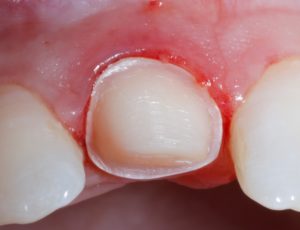
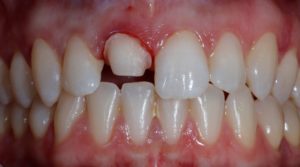 After the preparation we made a decision to mill an Emax and a Sirona CEREC (a feldspathic porcelain) block that came with the starter kit and see which one looked best. If you haven’t used your starter blocks and you are comfortable with your preparation and bonding using Variolink or Calibra you have a whole world sitting in a drawer or a box you have already paid for.
After the preparation we made a decision to mill an Emax and a Sirona CEREC (a feldspathic porcelain) block that came with the starter kit and see which one looked best. If you haven’t used your starter blocks and you are comfortable with your preparation and bonding using Variolink or Calibra you have a whole world sitting in a drawer or a box you have already paid for.

When the two crowns were finished milling we fired the Emax so we could custom shade it intra orally. It was immediately apparent that Emax was not going to do this case justice and we immediately put it to the side. We continued trying in the Sirona CEREC block and made minor changes in the shape and adjusted the bite.
 The block was a PC (poly chromatic) block so we did no staining and elected to polish the crown over glazing the crown. We used try in paste with the Variolink kit and chose a neutral shade to bond the crown in. We finished it with a green stone at the margins and a 12 blade to clean any excess bonding agent. Make sure you use a glycerin as an oxygen inhibiting layer at the margin to prevent cement discoloration. Keep in mind after bonding, the tooth color will be off due to dehydration of the tooth.
The block was a PC (poly chromatic) block so we did no staining and elected to polish the crown over glazing the crown. We used try in paste with the Variolink kit and chose a neutral shade to bond the crown in. We finished it with a green stone at the margins and a 12 blade to clean any excess bonding agent. Make sure you use a glycerin as an oxygen inhibiting layer at the margin to prevent cement discoloration. Keep in mind after bonding, the tooth color will be off due to dehydration of the tooth.
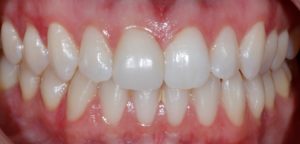
The final photos were taken two weeks post op to let the tooth rehydrate and gingival tissues heal. The patient has no sensitivity and states that she is functioning normally just like before the accident. We were very diligent in letting the patient know that if the tooth starts to discolor or if any endodontic symptoms start occurring to call us immediately. Everyone was very happy with the outcome of this single visit anterior restoration! Technology and materials working together achieved this result in one visit. Don’t get caught up in what is new and forget there are time tested materials that are highly esthetic and, when used correctly, are very strong. Go dig through your drawers and see what you have and what the indications are. You will probably be surprised at what you find laying around and what you can do with it.

